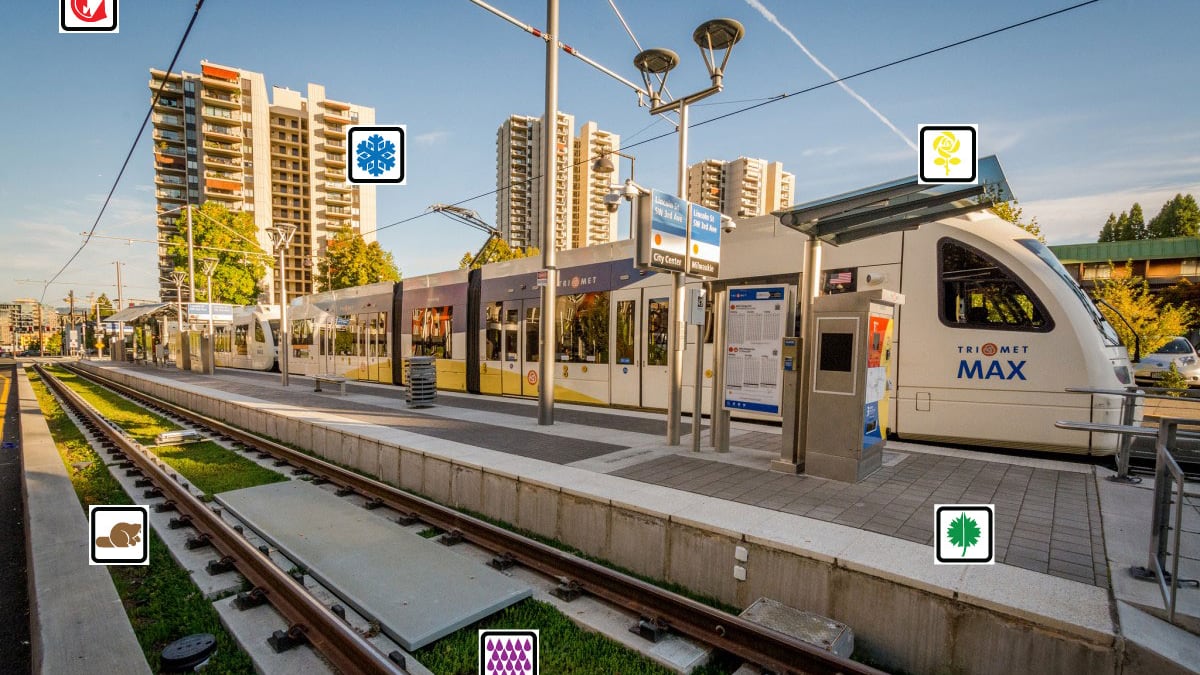This month, the Oregon Legislature debuted an ambitious plan pitched as a "fix" for Portland's traffic woes—featuring $1 billion to widen urban freeways.
Jim Howell says there's no surer way to waste a billion dollars.
"They keep saying they can't build their way out of congestion with more highways," he says. "So why are they trying?"
Howell, 83, has been asking annoying questions since 1971, when as a young architect he organized the protests that eventually turned Harbor Drive into Waterfront Park and co-founded the group that swapped Southeast Portland's proposed Mount Hood Freeway for light rail.
Howell now says Portland should be following the path of peer cities like Seattle, Austin and Atlanta and think bigger than wider roads. In the past two years, all three cities passed big ballot measures built on the idea that as they grow, cities must shift away from transportation that gets less efficient as more people use it (cars) and toward transportation that gets more efficient as more people use it: buses and trains.
In the Legislature and even at TriMet's own headquarters, Howell's plan is dead on arrival. But that was also the case 46 years ago, when Howell started fighting the seemingly inevitable Mount Hood Freeway project.
If Howell could spend $3 billion on transit, here's what he'd do to permanently speed up your commute.

A downtown MAX tunnel:
Today, the east landing of the Steel Bridge is TriMet's biggest time bomb. Thanks to four crisscrossing MAX lines, it's already at full capacity at rush hour. If TriMet ever wants more frequent trains, some of them will need a different route across the Willamette. Howell's answer: Go underneath. The Blue and Red lines could plunge 200 feet between the Lloyd District and Goose Hollow, with new, underground stations at the Rose Quarter and Pioneer Courthouse Square. Today's crawl through downtown would become a two-stop hop, luring thousands of east-west commuters off the roads.
Cost: $2 billion
Travel time (Lloyd Center to Goose Hollow): 7 minutes, down from 23 today
Yellow Line above the Central Eastside:
Instead of a new, $450 million freeway lane at the Rose
Quarter, Howell would give north-south travelers a rail
alternative: a beeline between North Portland and Milwaukie, on new, elevated tracks above the Union Pacific Railroad. Throw in an elevated walkway-bikeway too, and property owners could open second-story storefronts throughout
the district.
Cost: $200 million or less
Travel time (Rose Quarter to OMSI): 8 minutes, down from 23 today

Red Line to Tualatin:
Since 2009, the Westside Express Service train on these tracks has been a money pit disguised as a commuter rail line. But the reason fewer than 1,000 people ride it daily, Howell says, is that it runs only 16 times each day. His fix: Instead of stopping at the Beaverton Transit Center, the Red Line should turn left and run south along part of WES's current route.
Cost: $200 million or less
Travel time (Beaverton to Tualatin): 17 minutes
A bigger frequent-service bus system:
East Portland has plenty of density, lots of zero-car households and hardly any frequent-service bus lines. "TriMet should convert another six lines to frequent service," Howell says. "They only have about a dozen now, and they carry about half the bus riders." Eastside arteries like 122nd, 148th and 161st avenues would all get 15-minute service. And express buses on I-205 near Clackamas could fix rush hour far more cheaply and permanently than extra lanes, he says.
Cost: About $30 million a year, some of which would be recouped in additional fare revenue.

Commuter rail to Salem:
Five thousand five hundred Salem residents commute to primary jobs in Washington and Clackamas counties—that's one in 10 Salem workers—and 6,800 commuters head the other way. Howell wants to give them an alternative to I-5.
Cost: $500 million
Travel time (Tualatin to Salem): 48 minutes
Jim Howell's original transit proposal:

Disclosure: Michael Andersen also writes about housing issues as a part-time contractor for the nonprofit 1000 Friends of Oregon. His reporting here is unrelated.
